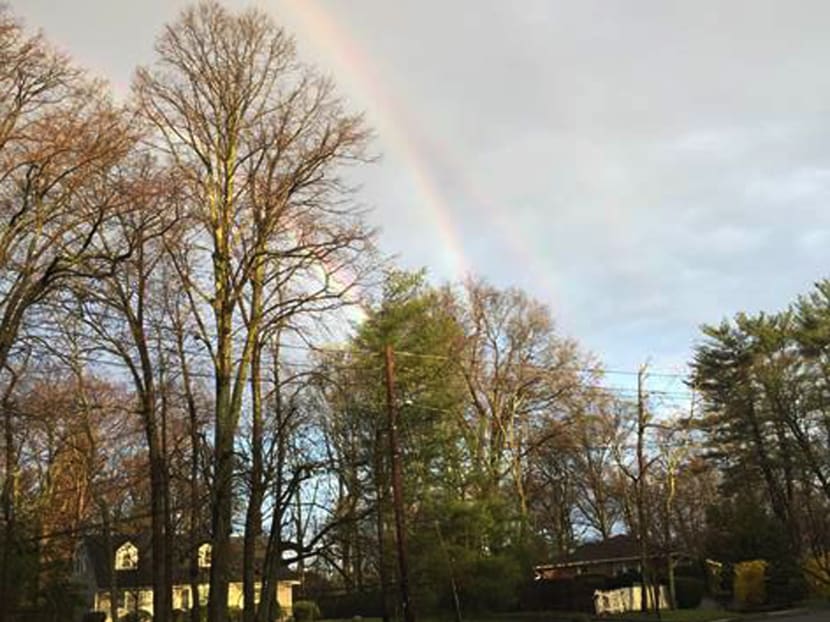Weird: Four rainbows photographed, but not quadruple rainbow
WASHINGTON — A photo of four rainbows in New York is striking a pot of gold on social media, but an expert in such rare events said this is not quite the quadruple miracle that it seems.

In this photo provided by Amanda Curtis, rainbows appear in the sky at a Glen Cove train station yesterday (April 21), on Long Island in New York. Photo: AP
WASHINGTON — A photo of four rainbows in New York is striking a pot of gold on social media, but an expert in such rare events said this is not quite the quadruple miracle that it seems.
"I had a moment of awe, heard my train coming, snapped the photo and ran after my train," said Ms Amanda Curtis, co-founder of a Brooklyn-based fashion start-up called Nineteenth Amendment, who took the photo in Glen Cove on Long Island. "It was very inspiring."
Many are calling it a quadruple rainbow. But it's not, said Professor of Meteorology at the US Naval Academy Raymond Lee, who studies and writes about rare rainbows.
First, a quick primer on rainbows. They are created when light is reflected through water droplets. A double rainbow happens when leftover light comes back for a second reflection through the raindrop. With each turn, the rainbow fades a bit.
When light heads through for a third or fourth time — called tertiary and quaternary, not quadruple — that is rare, maybe five have been confirmed in 250 years, Prof Lee said.
But when that occurs, the third and fourth rainbows are on the opposite side of the sky, like book ends, something dictated by complicated physics, Prof Lee said. Weather Underground meteorology director Jeff Masters and University of Georgia physics professor Craig Wiegert confirmed this.
"What happened this morning in New York was quite a different phenomenon," Dr Masters said in an email. They are reflections off of a water body, when the light bounces off a bay and then heads back through the droplets again, the experts said. These are called reflection rainbows, unusual but not oh-my-God.
"This is a fairly rare photograph," Prof Lee said. But he adds "not precedent-setting".
And even though he rained a little on Ms Curtis' parade, Prof Lee is impressed with her work: "I'm miserable at taking photographs of rainbows." AP






